1
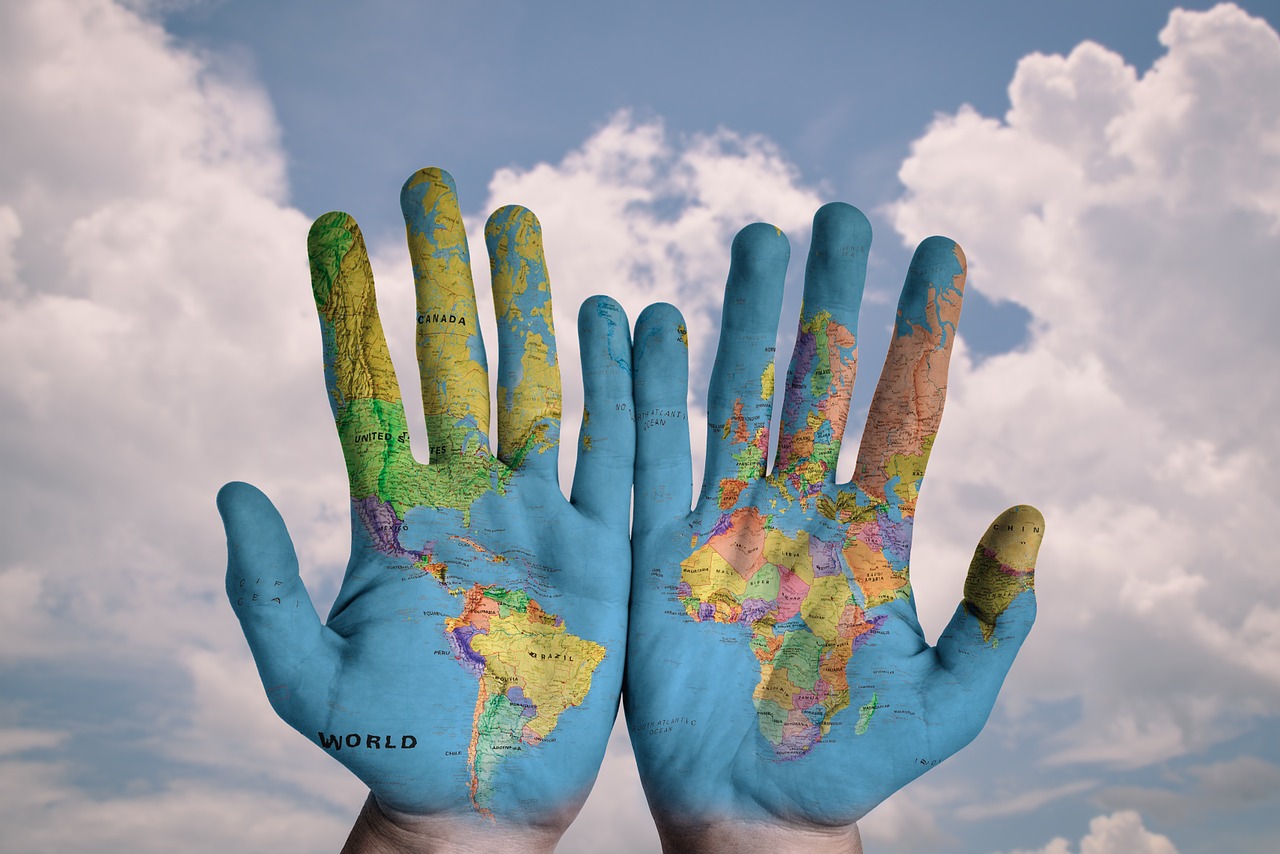
Key Terms
| Globalization | Ethics | Hierarchy |
| Sovereignty | NGOs | IGOs |
| United Nations | World Bank | European Nation |
Learning Targets
1.1 I can describe how the modern world is interconnected (socially, economically and politically).
1.2 I can articulate my own views of the world and support those views with substantiated evidence.
1.3 I can identify major world organizations and describe their structures/roles in the global community.
More than any other time in history, the future of our planet is being shaped by issues that are beyond any one nation’s ability to solve. We call this concept Globalization. Examples of globalization issues that we will discuss in Modern Global Issues are: human rights, the violation of human rights, trade, economic growth, peace, terrorism, water scarcity, and global warming. Each of these issues has implications that require a global regulatory approach; no one government has the power or the authority to impose a solution, and market forces alone will not solve the problem.
In the introduction unit to Modern Global Issues, you will be introduced to groups and organizations that are working towards peaceful resolutions to conflicts throughout the world. As a class we will be researching and discussing how organizations around the world are working to develop solutions to some of these issues.
Globalization
Globalization constitutes four aspects: trade and transactions, capital and investment movements, migration and movement of people, and the dissemination of knowledge. Environmental challenges such as global warming, cross-boundary water and air pollution, and overfishing of the ocean are linked with globalization. Globalizing processes affect, and are affected by, business and work organization, economics, socio-cultural resources, and the natural environment. Global challenges require global solutions, which can be difficult considering the multitude of stakeholders, for example: sovereign nations, non-governmental organizations, and other private parties. These solutions can also conflict with politics, social issues, and ethics.
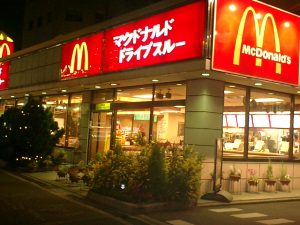
Global Organizations
An Intergovernmental Organization (IGO) is an organization composed primarily of sovereign states, or of other intergovernmental organizations. IGOs are established by treaty or other agreement that acts as a charter creating the group. Decisions made in IGOs are reached after discussion, debate, and a vote by representatives from all member countries. These decisions are often enacted as treaties or international laws. Examples of IGOs include the United Nations, the World Bank, or the European Union.
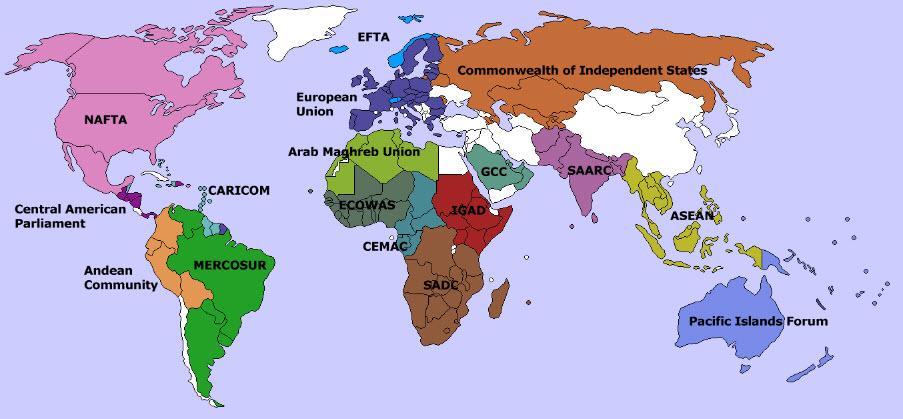
The United Nations
After WW II, a desire for a strong international body designed to keep world powers from tearing each other apart was necessary. The Big Three: Churchill (Britain), Roosevelt (U.S.), and Stalin (Soviet Union) devoted hours of dialogue to create a unifying intergovernmental organization. Despite considerable conflicts of interest among attending nations, a charter was ultimately approved by unanimous consent establishing the United Nations in 1945, with its headquarters in New York City.
The UN charter called for the establishment of a Security Council. The Security Council serves as the executive branch of the United Nations and must authorize any actions, such as economic sanctions, the use of force, or the deployment of peacekeeping troops.
The United States, Great Britain, France, China, and the Soviet Union each hold a permanent seat on the Security Council. The remaining ten seats are elected to two-year terms by the General Assembly. Each permanent member holds the power of veto. No action can go forth if any one of the five objects.
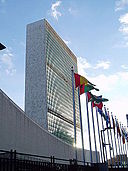
The main body of the United Nations is called the General Assembly. Every member nation holds a seat in the General Assembly, which is often described as a town meeting for the world. The General Assembly has standing committees to address ongoing issues such as economics and finance, social, cultural and humanitarian concerns, and legal problems. The General Assembly passes resolutions and has the power to make recommendations to the Security Council, but has no power to require any action. In addition to the General Assembly and Security Council, the UN has several committees designed to address a wide array of topics from the Status of Women to the Environment.
European Union
The European Union (EU) is a union of 28 member states that are located primarily in Europe, and are connected politically and economically. The EU has an internal single market and standardized system of laws that apply in all member states. EU policies aim to ensure the free movement of people, goods, services, and capital within the market, enact legislation in justice and home affairs, and maintain common policies on trade, agriculture, fisheries, and regional development. A monetary union was established in 1999 and is composed of 19 EU member states which use the euro currency.
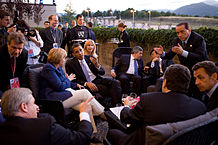
Countries join the union by accepting the founding treaties, thereby gaining the privileges and agreeing to the obligations of EU membership. This requires countries to give up a part of their sovereignty to the EU in return for representation.
To become a member, a country must meet requirements that include: a stable democracy that respects human rights and the rule of law; a functioning market economy; and the acceptance of the obligations of membership, including EU law.
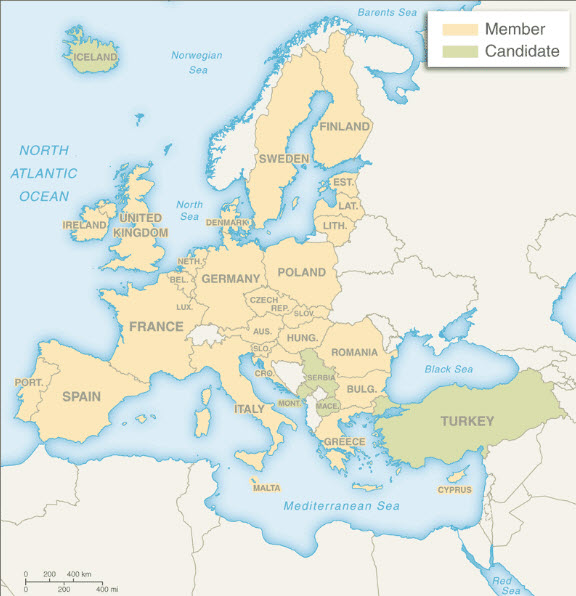
World Bank
The World Bank is an international financial institution that provides loans to developing countries for capital programs such as roads, dams, and telecommunications structures. The World Bank was formed in 1944 at the Bretton Woods Conference as a means for countries to access money. Today, the bank’s assistance plans are based on poverty reduction strategies aimed at the poorest developing countries in the world. The World Bank, after an extensive analysis of the country’s financial and economic situation, develops a strategy pertaining uniquely to the country in question. The government, then, identifies the country’s priorities and targets for the reduction of poverty, and the World Bank aligns its aid efforts accordingly.
Non-governmental Organizations
A non-governmental organization (NGO) is a not-for-profit organization that is independent from states and international governmental organizations. They are usually funded by donations, but some avoid formal funding altogether and are run primarily by volunteers. NGOs are highly diverse groups of organizations engaged in a wide range of activities, and take different forms in different parts of the world. Some may have charitable status, while others may be registered for tax exemption based on recognition of social purposes. Others may be fronts for political, religious, or other interests. One characteristic these diverse organizations share is that their non-profit status means they are not hindered by short-term financial objectives. Accordingly, they are able to devote themselves to issues which occur across longer time horizons, such as climate change, malaria prevention, or a global ban on landmines. Public surveys reveal that NGOs often enjoy a high degree of public trust, which can make them a useful agent for the concerns of society and stakeholders. Some examples of NGOs are: Save the Children, OXFAM, Doctors Without Borders, and Amnesty International.
Links to Resources
Current Events
Globalization
Pros and Cons of Globalization (Forbes Article):
http://www.forbes.com/sites/mikecollins/2015/05/06/the-pros-and-cons-of-globalization/#21bbe4c52170
Crash Course (Globalization)
https://www.youtube.com/watch?v=5SnR-e0S6Ic
Intergovernmental Organizations (IGOs)
United Nations Home Page:
http://www.un.org/en/index.html
World Bank Group Home Page::
European Union Home Page:
Non-governmental Organizations (NGOs)
Overview of NGOs and brief explanation – video:
Non-Governmental Organization (NGO) Guide (Duke University):
http://guides.library.duke.edu/c.php?g=289595&p=1930435
Related Articles to IGOs
Brexit: The main issues (International Business Times Article):
http://www.ibtimes.co.uk/eu-referendum-these-are-issues-that-will-dominate-brexit-debate-1507391
Brexit: What happens now (BBC Article):